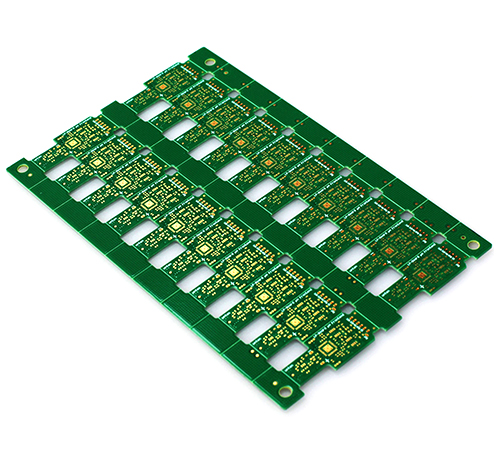Time:2022-07-06 Visit:
With the continuous improvement of human requirements for the living environment, the environmental problems involved in the current PCB production process are particularly prominent. The topic of lead and bromine is the hottest, lead-free and halogen-free will affect the development of PCB in many ways. QQ: 2355957872 Miss Lan Although at present, the changes in the surface treatment process of PCB are not very big, it seems to be a relatively distant thing, but it should be noted that long-term slow changes will lead to huge changes. Under the circumstance that the voice of environmental protection is getting higher and higher, the surface treatment process of PCB will definitely undergo great changes in the future. The most basic purpose of surface treatment is to ensure good solderability or electrical properties. Since copper in nature tends to exist in the form of oxides in the air and is unlikely to remain as raw copper for long periods of time, additional copper treatments are required. Although in subsequent assembly, strong flux can be used to remove most copper oxides, but strong flux itself is not easy to remove, so the industry generally does not use strong flux. There are many PCB surface treatment processes, the common ones are hot air leveling, organic coating, electroless nickel plating/immersion gold, immersion silver and immersion tin, which will be introduced one by one below. 1. Hot air leveling (spraying tin) Hot air leveling, also known as hot air solder leveling (commonly known as spraying tin), is a process of coating molten tin (lead) solder on the surface of the PCB and leveling (blowing) with heated compressed air. It forms a coating that resists copper oxidation and provides good solderability. Solder and copper form a copper-tin intermetallic compound at the junction during hot air leveling. PCBs are submerged in molten solder during hot air leveling; the air knife blows the liquid solder before the solder solidifies; the air knife can minimize the meniscus of the solder on the copper surface and prevent solder bridging. 2. Organic Solderability Preservative (OSP) OSP is a process for surface treatment of printed circuit board (PCB) copper foil that meets the requirements of the RoHS directive. OSP is the abbreviation of Organic Solderability Preservatives, which is translated as organic solder protection film in Chinese, also known as copper protection agent, also known as Preflux in English. Simply put, OSP is to chemically grow an organic film on the clean bare copper surface. This layer of film has anti-oxidation, thermal shock resistance, moisture resistance, and is used to protect the copper surface from rusting (oxidation or vulcanization, etc.) in the normal environment; but in the subsequent high temperature welding, this protective film must be very It is easily and quickly removed by the flux, so that the exposed clean copper surface can be combined with the molten solder to form a strong solder joint in a very short time. 3. Nickel-plated gold on the whole board Nickel-plated gold on the board is to coat a layer of nickel and then a layer of gold on the conductors on the surface of the PCB. Nickel plating is mainly to prevent the diffusion between gold and copper. Now there are two types of electroplated nickel gold: soft gold plating (pure gold, the gold surface does not look bright) and hard gold plating (the surface is smooth and hard, wear-resistant, contains other elements such as cobalt, and the gold surface looks brighter).

Soft gold is mainly used for gold wire in chip packaging; hard gold is mainly used for electrical interconnection in non-soldering places. 4. Immersion gold plate Immersion gold is a thick layer of nickel-gold alloy with good electrical properties wrapped on the copper surface, which can protect the PCB for a long time; in addition, it also has environmental tolerance that other surface treatment processes do not have. . In addition, immersion gold can also prevent the dissolution of copper, which will benefit lead-free assembly. 5. Immersion tin Since all current solders are based on tin, the tin layer can be matched with any type of solder. The immersion tin process can form a flat copper-tin intermetallic compound, which makes the immersion tin have the same good solderability as the hot air leveling without the headache of the flatness problem of the hot air leveling; the immersion tin board cannot be stored for too long , the assembly must be carried out according to the order of immersion tin. 6. The immersion silver process of immersion silver plate is between organic coating and electroless nickel plating / immersion gold, the process is relatively simple and fast; even if exposed to heat, humidity and pollution, silver can still maintain good solderability , but will lose its luster. Immersion silver does not have the good physical strength of electroless nickel/immersion gold because there is no nickel under the silver layer. 7. Electroless nickel palladium gold Compared with immersion gold, chemical nickel palladium gold has an extra layer of palladium between nickel and gold. Palladium can prevent corrosion caused by replacement reaction and be fully prepared for immersion gold. Gold covers the palladium tightly, providing a good contact surface. 8. Electroplating hard gold plate In order to improve the wear resistance of the product and increase the number of plugging and unplugging, electroplating hard gold. As the requirements of users are getting higher and higher, the environmental requirements are getting stricter, and there are more and more surface treatment processes. In the end, it seems a bit dazzling and confusing to choose the kind of surface treatment process that has development prospects and greater versatility. . Where the PCB surface treatment process will go in the future cannot be accurately predicted now. In any case, satisfying user requirements and protecting the environment must come first!